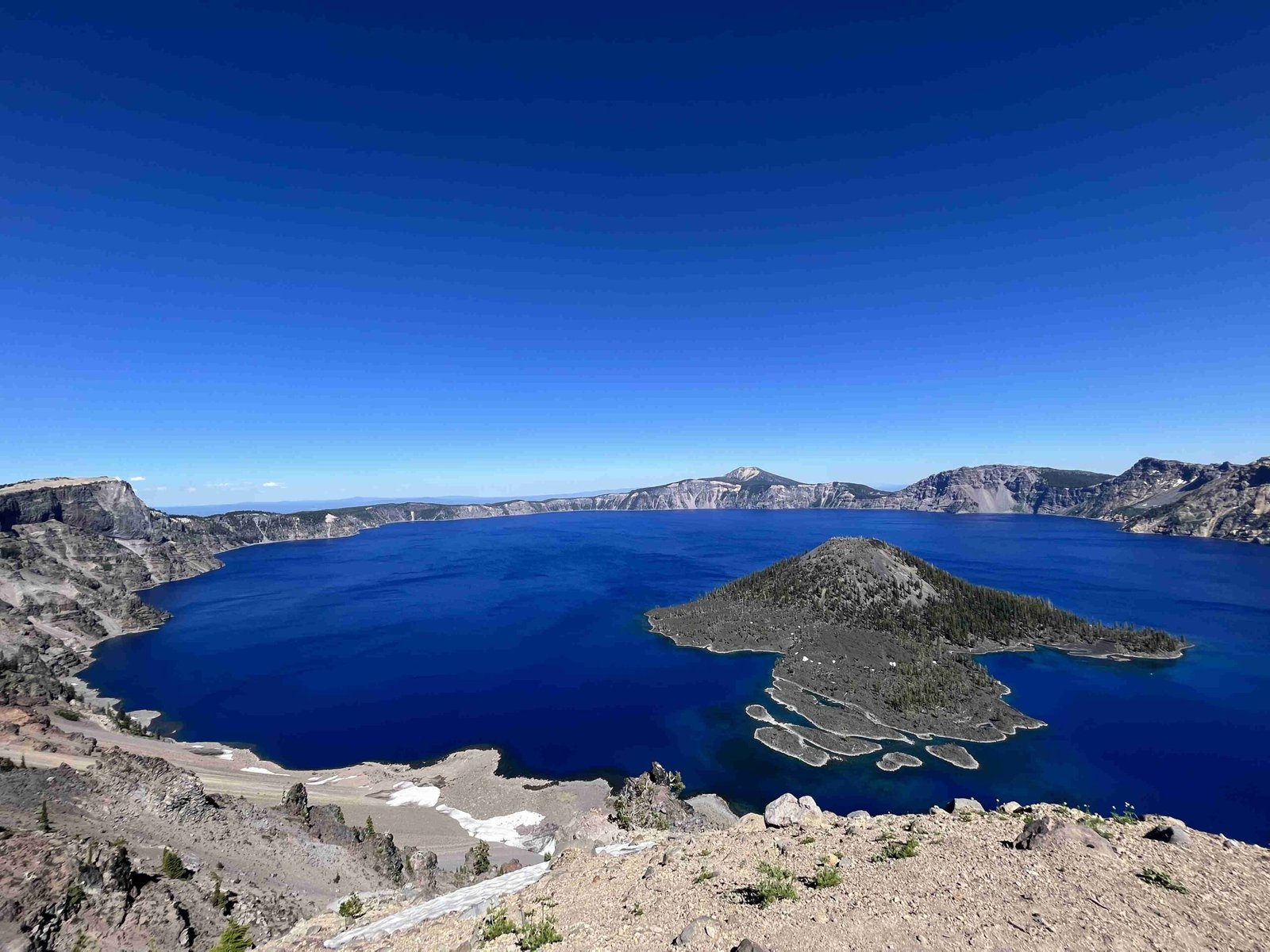Crater Lake volcano pillars are unique geological formations resulting from the cataclysmic eruption of Mount Mazama about 7,700 years ago. These pillars, composed of volcanic rocks like andesite and dacite, stand as testament to the violent geological history of the Cascade Range. While not true basalt columns, these formations offer visitors a glimpse into the Earth’s fiery past and provide a stunning backdrop to one of America’s deepest lakes.
What Are the Geological Origins of Crater Lake Volcano Pillars?

The volcanic pillars at Crater Lake are primarily associated with the collapse of Mount Mazama and the subsequent formation of the caldera. These geological features are composed of various volcanic rocks, including:
- Andesite
- Dacite
- Rhyodacite
These rock types are characteristic of the Cascade Range volcanoes and tell a story of multiple eruptions and lava flows over thousands of years.
Formation Process
- Mount Mazama erupts violently
- Caldera collapses as magma chamber empties
- Lava flows and pyroclastic materials form layers
- Erosion and weathering shape the remaining structures
While Crater Lake doesn’t feature the classic hexagonal basalt columns found in some other volcanic areas, it does boast impressive volcanic formations that have been sculpted by time and the elements.
What Are the Most Notable Crater Lake Volcano Pillars?

While not technically pillars in the strictest sense, Crater Lake features several remarkable volcanic formations that draw visitors from around the world:
-
Phantom Ship: This rock formation, composed of andesite and dacite, resembles a ghost ship on the lake’s surface. It’s one of the most photographed features of Crater Lake.
-
Wizard Island: A cinder cone that rises 764 feet (233 meters) above the lake’s surface, Wizard Island is a testament to post-caldera volcanic activity.
-
Caldera Walls: The steep walls of the caldera, rising about 1,000 feet above the surrounding landscape, showcase layers of lava flows and pyroclastic deposits.
| Formation | Height | Composition | Accessibility |
|---|---|---|---|
| Phantom Ship | 160 feet | Andesite, Dacite | Viewable from rim |
| Wizard Island | 764 feet | Andesite | Boat tour required |
| Caldera Walls | ~1,000 feet | Various volcanic rocks | Viewable from rim |
How Can Visitors Experience Crater Lake Volcano Pillars?
Experiencing the volcanic pillars and formations at Crater Lake is a must for geology enthusiasts and nature lovers alike. Here are some ways to explore these geological wonders:
-
Rim Drive: This 33-mile road encircles the lake, offering numerous viewpoints to observe the caldera walls and formations like Phantom Ship.
-
Boat Tours: Take a guided boat tour to get up close to Wizard Island and view the caldera walls from the lake’s surface.
-
Cleetwood Cove Trail: This steep 1.1-mile trail is the only legal access to the lake’s shore, providing a unique perspective of the surrounding volcanic structures.
-
Ranger-Led Programs: During summer months, park rangers offer educational talks and guided hikes focusing on the park’s geology.
What Are the Best Times to Visit Crater Lake Volcano Pillars?
The best time to visit Crater Lake and its volcanic formations depends on your preferences and the activities you’re interested in:
- Summer (July-September): Peak season with warm temperatures and full access to park facilities and activities.
- Fall (October-November): Fewer crowds and beautiful fall colors, but some facilities may begin to close.
- Winter (December-April): Snow-covered landscapes offer a different perspective, but many roads and facilities are closed.
- Spring (May-June): Wildflowers begin to bloom, but snow can still affect accessibility.
Considerations for Visitors
- Check weather conditions before your visit, as they can change rapidly.
- Wear appropriate footwear for hiking on volcanic terrain.
- Bring plenty of water and sun protection, especially during summer months.
- Follow all park regulations to protect the fragile ecosystem.
What Safety Precautions Should Visitors Take When Exploring Crater Lake Volcano Pillars?
When exploring the volcanic formations at Crater Lake, safety should be a top priority:
- Stay on designated trails to avoid unstable terrain.
- Be cautious near cliff edges, especially when taking photographs.
- Prepare for altitude effects, as the rim is at an elevation of about 7,000 feet.
- Carry extra water and snacks, particularly when hiking.
- Inform someone of your plans if venturing on longer hikes.
- Be aware of wildlife and maintain a safe distance.
How Have Crater Lake Volcano Pillars Influenced Scientific Research?
The volcanic pillars and formations at Crater Lake have been a subject of scientific interest for decades:
- Volcanology: Studies of the caldera formation have contributed to our understanding of large-scale eruptions.
- Geology: The layered walls of the caldera provide insights into the volcanic history of the Cascade Range.
- Ecology: Research on how life has recolonized the area after the eruption informs ecological succession studies.
- Hydrology: The lake itself, fed solely by precipitation, is a unique subject for hydrological research.
Ongoing research continues to reveal new information about the formation and evolution of this unique volcanic landscape.
References:
– https://oe.oregonexplorer.info/craterlake/geology.html
– https://www.nps.gov/articles/nps-geodiversity-atlas-crater-lake-national-park.htm
– https://www.nps.gov/crla/planyourvisit/upload/Geology-508.pdf
